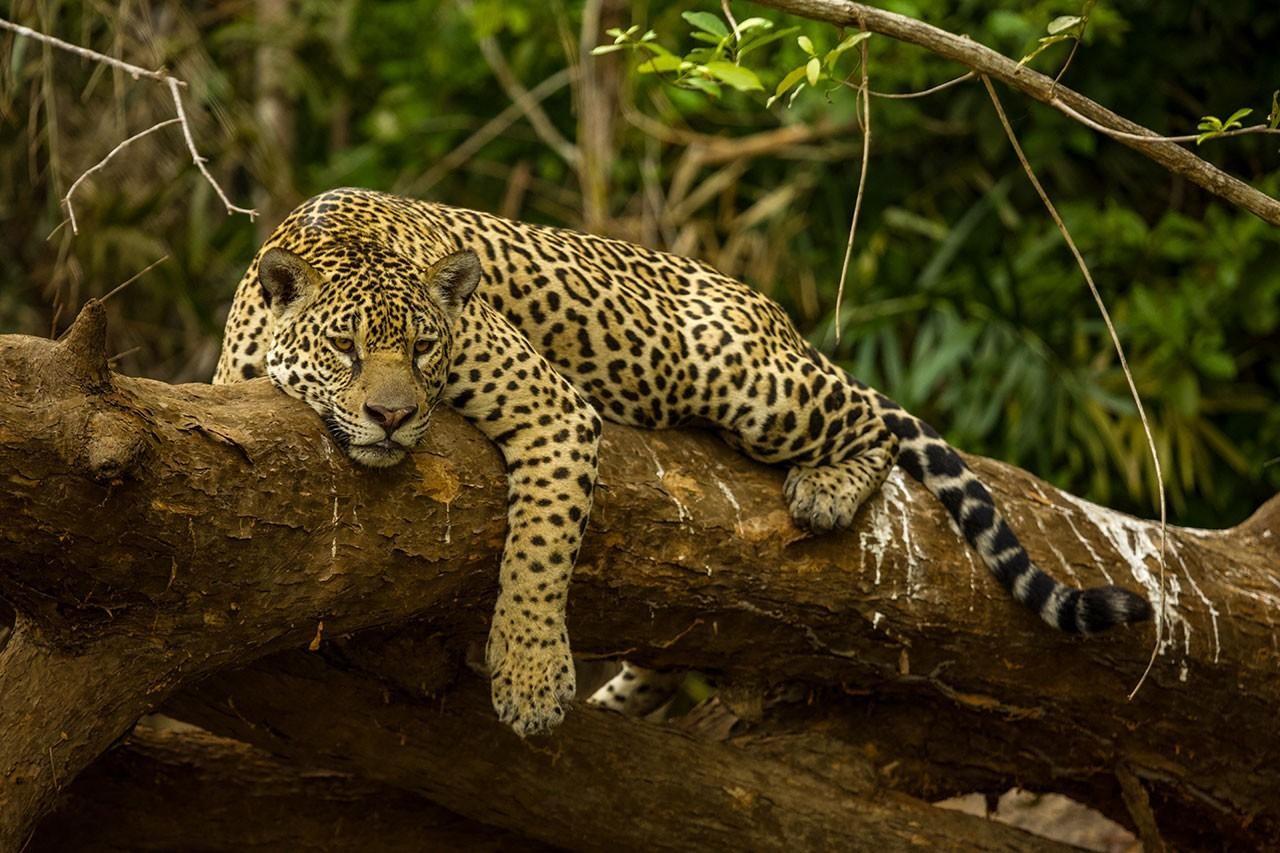The Jaguar (Panthera onca) is the largest cat species found in the Americas.
Jaguars have an average life span of 12 to 15 years and they can weigh between 100 and 250 pounds.
They are the third-largest cat in the world after the lion and the tiger. In Panama, you will find them in the rainforests where their characteristic black patches act as a form of camouflage, which provide plenty of cover for avoiding humans and stalking prey.
Their spots resemble roses, and as result they are known as rosettes.
There is also a black jaguar, which are much more rare. A melanistic black jaguar is a color morph which occurs at about 6% frequency in wild populations.
Panaam is a key place for maintaining the genetic flow among jaguars because it intertwines the north and south parts of the continent but they have become rare in the Panama Canal area and are mostly confined the remaining wilderness of the Darien Gap (learn more about conservation efforts to build a Jaguar Freeway).
The jaguar is under threat in Panama largely because of industrial agriculture, particularly cattle ranching because they are known to attack livestock for easy prey and cattle ranchers respond by setting booby traps and shooting them with guns.
Jaguars are solitary animals. Males defend a range of up to 80-90km2 and only come together with females to mate. Breeding occurs throughout the year, and females have up to four cubs, which disperse after two years.
They are mostly nocturnal and they are excellent tree climbers. They often use branches of large trees as a vantage point to pounce on unsuspecting prey from above.
The Darien region of Southern Panama offers some of the best remaining jaguar habitat in the Americas but there are also found in the mountains near Panama City.
There is significant public support in Panama for the conversation of jaguar habitat in the Darién region’s dense rainforests but economic pressures and cattle ranching is slowly encroaching on their habitat there.
The jaguar is prominent in many Native American cultures. In some traditions the Jaguar is the God of the Night and the formidable lord of the underworld. The name jaguar is derived from the Native American word yaguar, which means “he who kills with one leap.”
Jaguars are excellent swimmers and they eat prey in the rivers in the form of fish, turtles and small alligator-like animals called caymans. In the rainforest, they eat large animals such as deer, peccaries, capybaras and tapirs.
You can learn more about Jaguar conservation in Panama at Yaguará Panamá and Panama Wildlife Conservation.
This Footage of Jaguars in Panama Could Save Their Lives
The power of public opinion and social media can save the habitat of the Jaguar in Panama.
A National Geographic Short Film About The Jaguar
Jaguars have never previously successfully been returned to the wild.
- 10 Sustainable Travel Trends Driving The Future of Tourism - March 9, 2025
- 10 Tips To Sell Out Your Transformational Retreats In 2025 - February 20, 2025
- Build 10 Habits That Free Up Your Time With Mindful Coaching - February 11, 2025




